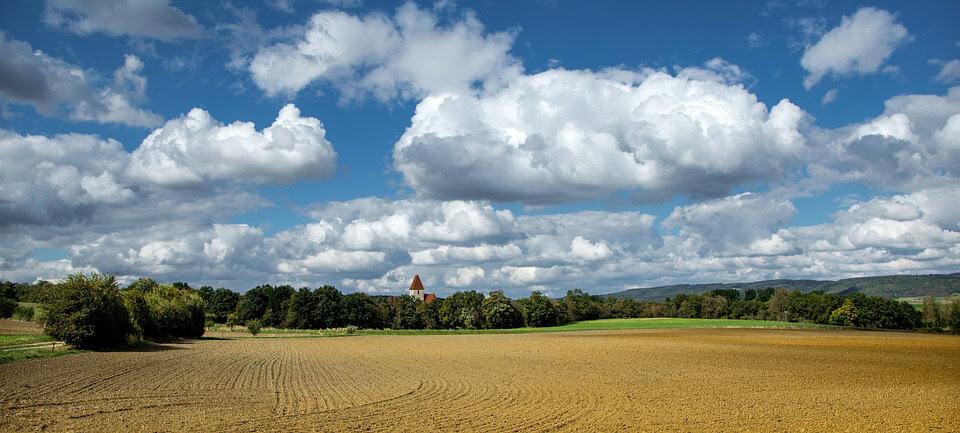by Alison Mitchell, Co-Executive Director, New Jersey Conservation Foundation.
When you think about farmers in the Garden State, you might picture them planting seeds, milking cows, raising poultry, harvesting crops, and delivering fresh, healthy foods to market.
Without a doubt, farmers feed the world. As the old saying goes, “No farmers, no food.”
Did you know that as farmers grow food, some are simultaneously mitigating the threats posed by our changing climate? An increasing number of farmers are embracing “climate-smart” or “climate-friendly” practices that reduce carbon dioxide in the atmosphere.
Just as forests absorb and sequester carbon, so do healthy agricultural soils and crops.
The Rodale Institute, a Pennsylvania-based nonprofit, is dedicated to growing the “regenerative” organic movement to increase the ability of soils and vegetation to sequester carbon. Rodale recommends a variety of practices that build soil health, with the ultimate goal of dramatically reducing heat-trapping gases that are warming the planet.
Rodale isn’t alone in its quest. A 2021 report published by the Rutgers Climate Change Resource Center and its partners also looks toward natural solutions to the climate crisis.
“The ability of natural and working lands (including forests, farmland, ranchland, grassland, wetlands and urban lands) to sequester, or store carbon can be viewed as an opportunity for mitigating climate change by removing carbon dioxide from the atmosphere and storing carbon in vegetation and soil,” says the report, Ecosystem Service Valuation Approaches and Carbon Mitigation Considerations for Garden State Agriculture.
The good news is that farmers don’t have to sacrifice productivity to help address climate change. In fact, farm productivity may increase with healthier soils.
“For 60 years, the message that’s been conveyed to farmers across the United States has been, you’ve got to produce more,” says Tom Vilsack, U.S. Secretary of Agriculture. “That’s one of the principal reasons for doing climate-smart practices: not just to reduce greenhouse gas emissions or to sequester more carbon, but to improve soil health. And as we improve soil health, we’re also going to improve productivity.”
When farmers use tools like cover crops, compost and rotational grazing, said Vilsack, the soil holds the potential for massive carbon sequestration. This is good for the climate, crops and farmers.
Soil health is defined as the capacity of the soil to function as a vital, living ecosystem that sustains plants, animals and humans. Regenerative agriculture boosts microbes in the soil that store carbon. Conventional agriculture, on the other hand, often destroys soil microbes through the use of synthetic chemical pesticides and fertilizers.
One New Jersey farm that has been following a regenerative and sustainable path for years is the Bobolink Dairy and Bakehouse in Milford, which produces cheeses, meats and breads.
When founders Nina and Jonathan White brought their operation to the preserved property in 2010, the fields had been in conventional agriculture for many years. They described the land as “a barren landscape of corn stubble and pale, parched earth.” The farm’s runoff flooded nearby roads during storms.
Within a year of the Whites replanting Bobolink’s pastures, flooding and erosion subsided, and the organic matter and microbial flora began to return. Ten years later, the soil’s organic matter had doubled.
Nina White said one of the keys to restoring the farm’s ecological health was using methods similar to how farming was done 200 years ago. No chemicals are used on the land, and no antibiotics are fed to the cows. She and her husband use minimal petroleum in their farming practices, create as little waste as possible, and prioritize the health and welfare of their animals.
“I’d really like people to know there is an alternative” to conventional farming practices, said Nina.
Another New Jersey farm adhering to regenerative practices is the Rancocas Creek Farm in Southampton, operated by the nonprofit Pinelands Preservation Alliance to grow chemical-free produce, manage stormwater and promote environmental stewardship.
For farmers wanting to become more climate-friendly, now may be the time.
For years, the U.S. government has incentivized environmental best practices through programs addressing habitat, watershed health and erosion. The Biden administration increased support for those efforts with a focus on the climate. In 2022, the U.S. Department of Agriculture launched a Climate-Smart Commodities program, investing more than $3 billion into 141 projects.
Earlier this month, the U.S Department of Agriculture (USDA) announced new funding available for agricultural producers and forest landowners to participate in voluntary conservation programs and adopt climate-smart practices. The Inflation Reduction Act (IRA) provides an additional $19.5 billion over five years for climate-smart agriculture through several programs run by the USDA’s Natural Resources Conservation Service (NRCS).
Let’s thank those farmers who are working to make their land healthier, climate-smart and resilient – for the benefit of all. To learn more about regenerative organic farming, visit the Rodale Institute website at https://rodaleinstitute.org/education/resources/regenerative-agriculture-and-the-soil-carbon-solution/.
To learn more about the “Ecosystem Service Valuation Approaches” report, visit https://njclimateresourcecenter.rutgers.edu/projects/ecosystem-service-valuation-approaches-and-carbon-mitigation-considerations-for-garden-state-agriculture/.
For more information on the NRCS climate-smart programs, visit https://www.nrcs.usda.gov/news/biden-harris-administration-announces-availability-of-inflation-reduction-act-funding-for.
And for information about preserving New Jersey’s land and natural resources, including farms like Bobolink, visit the New Jersey Conservation Foundation website at www.njconservation.org or contact me at [email protected].

